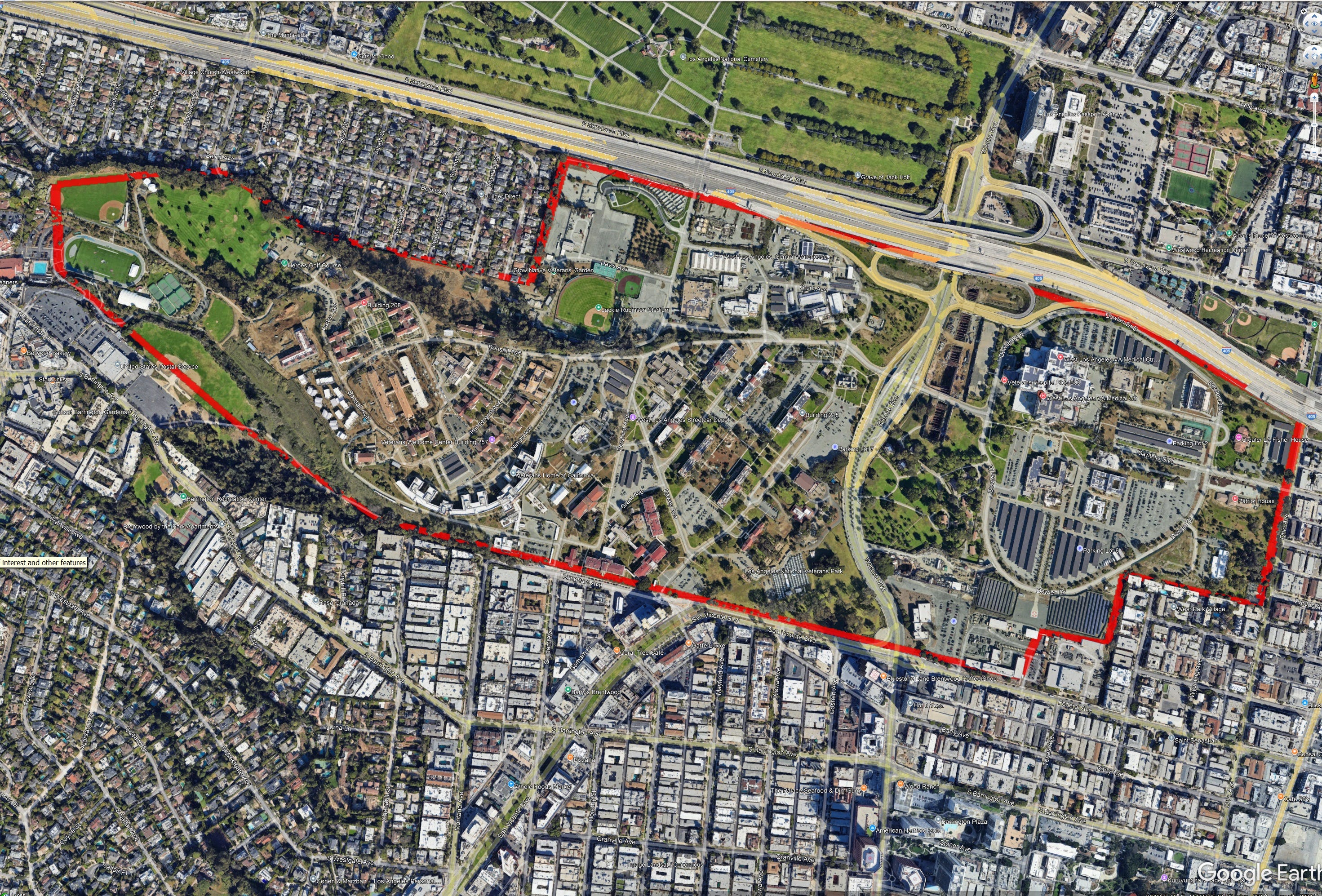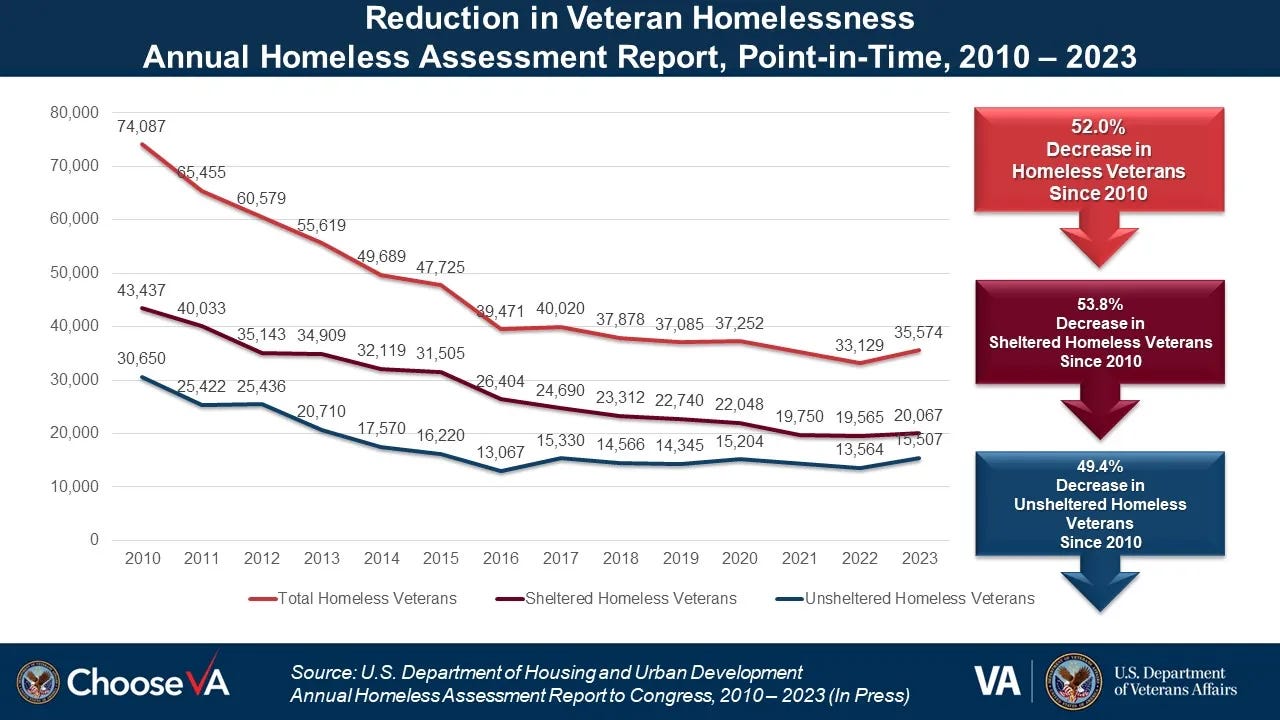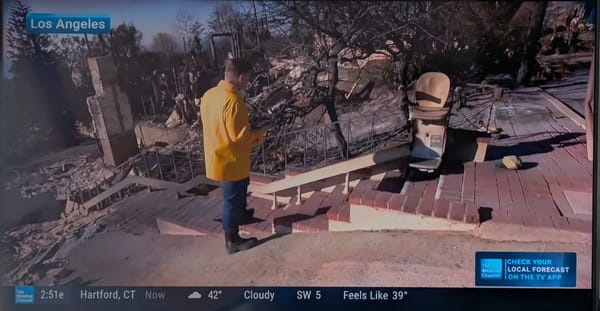Weekly rundown 9/8: Spotlight on LA VA legal ruling
Because the VA should use its land for veterans, not outside leases
Hello good readers! It’s time for this week’s news roundup, with a spotlight on a legal ruling coming out of LA. The ruling is just such an important intersection of land use, housing and disability – and hopefully will result in improved quality of life for SoCal veterans with disabilities (and veterans in general).
For you "reading in advance" types
I've been working on an article about how Berkeley’s NIMBYism betrayed the Disability Rights Movement that was born there, and will hopefully publish it in the next week or two. Those of you that want to do some reading to prep can check out this set of outside pieces (and ponder how they fit together):
Berkeley disability activists sparked a national movement – KALW
Ed Roberts (activist) – Wikipedia
The History of Gentrification in Berkeley: Part I – The Discourse Lounge
The History of Gentrification in Berkeley: Part II – The Discourse Lounge
DisabilitYIMBY is a reader-supported publication. To receive new posts and support my work, consider becoming a free or paid subscriber.
Spotlight on the LA VA:
Judge orders more housing for veterans on VA West L.A. campus – ABC7 LA
ABC's lead gives the TL;DR rundown
In a hard-hitting, sometimes-shocking ruling that blasts the U.S. Department of Veterans Affairs for "turning its back" on the disabled veterans it was designed to help, a federal judge Friday ordered additional housing for veterans on the agency's West Los Angeles campus.

This ruling is a perfect example of how bad land use can disadvantage people with disabilities and veterans specifically. But first, I think it's important to set some context for the exceptionally high veteran homelessness in LA:
Due to decades of bad state and city level policies, California is ranked 49th out of all 50 states in homes per capita (0.38 homes per capita, or 13% less than the national average of 4.3 homes per capita)
A Brookings analysis homelessness in the 48 Department of Housing and Urban Development (HUD) “Major City” Continuum of Care (CoC) geographies shows that the SF Bay Area, Los Angeles basin, Sacramento and Fresno areas have exceptionally high homeless rates and rates of unsheltered homelessness.
The Los Angeles City & County CoC has the fifth highest rate of homelessness at 670 homeless per 100K population, third-highest unsheltered homeless at 472 per 100 K population, and seventh highest percent of homeless individuals who are unsheltered at 70%.
Next door Long Beach CoC has the third-highest rate of homelessness (730 per 100K), the second highest unsheltered (507 per 100K), and eighth highest percent of homeless individuals who are unsheltered (69%). Suffice to say, the region has a homelessness crisis.
The causes of veteran homelessness are multifaceted, and veterans are slightly more likely to be homeless than the general population (22 per 10K vs 20 per 10K counted in the 2023 HUD point-in-time homelessness count).
Although veteran homelessness is 52% lower than it was in 2010, the total number of veterans in the 2023 Point-in-Time count was 7.4% higher than in 2022, led by a 14.3% jump in unsheltered homeless veterans.

Veteran homelessness dropped for years but increased 7.4% from 2022 to 2023, led by a 14.3% jump in unsheltered homelessness (VA) The National Alliance to End Homelessness notes that:
Veterans are not unlike civilians when it comes to homelessness. They must navigate the lack of affordable housing and economic hardship that everyone faces in addition to the challenges brought on by multiple and extended deployments. Taken together, these factors create a population that deserves–but can often struggle with–housing stability.
Research indicates that those who served in the late Vietnam and post-Vietnam eras are at the greatest risk of becoming homeless but that veterans from more recent wars and conflicts are also affected. Veterans returning from deployments in Afghanistan and Iraq often face invisible wounds of war, including traumatic brain injury and post-traumatic stress disorder, both of which correlate with homelessness.
Importantly, the 2023 HUD report notes that 30% of all homeless veterans live in California and “Los Angeles, CA [CoC]… had the largest number of veterans experiencing homelessness, with 3,874 (or 11% of all veterans experiencing homelessness).”
Caveat that I’m not exactly an expert on veteran homelessness, but as with all homelessness there are plenty of overlaps with physical and psychological disabilities worth exploring in more depth.
The shortage of newer, physically accessible units in the LA area affects the whole disability community and contributes – in addition to the other economic and social disadvantages people with disabilities (PWDs) face – to higher rates of homelessness in the disability community, including veterans with disabilities. This is just a microcosm of the larger housing market and homelessness: if PWDs at different income levels are fighting for limited accessible homes, the folks with more resources will outbid less resourced PWDs and leave that second group homeless.
So, that’s the veteran-homeless-in-LA background, with a nod to disability. Judge David O. Carter’s ruling highlights the VA’s specific culpability for those high numbers and the impact of illegal land use decisions on veterans with disabilities:
The claims in the lawsuit and the judge’s ruling make clear that this is largely an issue of land use and ownership – two themes central to urbanism/YIMBYism. The VA’s 388-acre campus is supposed to be utilized for serving veterans, including through medical care and housing. Meanwhile, veterans in need of frequent medical care deserve to have appropriate housing near those medical facilities (this is basic good land use: people deserve to have easy access to the community resources they most frequently use, with those resources a short commute away by sidewalks and public transit). But that isn’t the case: instead, the VA has been managing its property inappropriately and illegally, shortchanging veterans in the process.
U.S. District Judge David O. Carter also determined that the department has been illegally leasing portions of the campus to a private school, UCLA's baseball team, an oil company and other private interests.
That’s right – instead of providing sufficient housing co-located with medical facilities, some land was used for, among other things, “UCLA's Jackie Robinson baseball stadium and the affluent Brentwood School's athletic complex.” Now, you could argue that the fact UCLA and the Brentwood School even approached the VA about using their land is because the Los Angeles area is overwhelmed with housing sprawl, so it's tough to find places to build athletic facilities. If LA had more housing density, there would be more free land for larger athletic facilities; but with the shortage of land, land-seekers struggle and big property owners like the VA can command a lot of cash for land leases. That cash is tempting, and the VA seems to have preferred it to serving veterans directly.
In the end, California’s housing shortage and this improper use of land combine to make it so the LA CoC has especially high rates of veteran homelessness. The article also references veterans who were only able to secure VA-affiliated housing far away from the LA campus and, as a result, must regularly commute hours for medical care. The entire situation is unreasonable.
Judge Carter, whose ruling recognized the tremendous stress faced by veterans with disabilities in the LA CoC, ordered the VA to use its land for veterans, not outside parties.
Ultimately, the court found that veterans are entitled to more than 2,500 units of housing at the campus “and termination of the illegal land-use agreements.”
…The judge's order Friday orders the VA to build 750 units of temporary housing within 12 to 18 months and to form a plan within six months to add another 1,800 units of permanent housing to the roughly 1,200 units already in planning and construction under the settlement terms of an earlier lawsuit.
I certainly hope the VA follows through and respects its legal obligations this time.
Here are some other highlights from this past week:
New report exposes accessibility challenges for disabled bus users (UK focus) – Bus Users
Blogger calls for back-up plan after train delays – BBC News
Making waves for people with disabilities: Europe’s beaches are becoming more accessible for all – Euro News
Federal court rejects Illinois’ bid to end court oversight of disability programs – Harold-Whig
Disabled people in Florida still struggling to get Medicaid restored after ‘unwinding’ – NBC news
This NJ program aims to get people with disabilities out of nursing homes. How it works – northjersey.com
DOJ, Washing State Parks settle ADA violations – KIRO 7
Many of Allegheny County’s housing units are empty, despite homeless people on wait lists, audit finds – KDKA News
NYC Environmental Justice Activists Feel Ignored by the City and the Army Corps on Climate Projects – Inside Climate News
Can Kamala Harris Turn Democrats Into the Party of YIMBY? – Newsweek
The Labyrinthine Rules That Created a Housing Crisis – The Atlantic (paywall)
Montana Supreme Court reverses judge’s decision that blocked residential zoning laws – Daily Montanan



